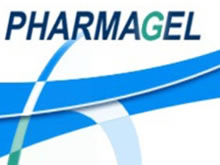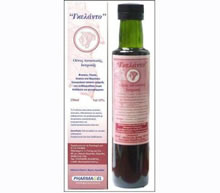
Dictionary of Allergies .. Factors driving autoimmune disease
Factors driving autoimmune disease
There are two classes of autoimmune disease, organ-specific and non-organ specific or systemic. These cells producing autoantibodies are selected by antigen as evidenced especially by presence of mutations and high affinity antibody. T-cells are pivotal in all forms of autoimmunity as evidenced by the therapeutic benefit of anti-T-cell monoclonals such as anti-CD4, and the frequent development of high affinity IgG autoantibodies. The production of anergic T-cells by the use of non-depleting-CD4 in the presence of antigen is discussed with particular reference to its potential for immunological intervention in autoimmune disease. It is possible to identify T-cell epitopes in organ-specific autoimmunity by using pathogenic T-cell clones or hybridomas to identify the peptide sequences which are reactive.
Antigen-specific therapy may ultimately be based on such peptide epitopes. The specificity of the T-cells in systemic autoimmunity is still obscure, but there is some evidence that reactivity with certain germ-line idiotypes can lead to the development of systemic autoimmunity. The possibility of stimulating B-cells specific for autoantigens such as DNA becomes feasible if a complex of antibody and DNA is taken up by these specific B-cells and processed idiotype presented to T-helpers specific for those idiotype epitopes.
Evidence is presented that there may be pre-existing defects in the target organ in certain organ-specific disorders, and the evidence for a glycosylation defect in the IgG in patients with Rheumatoid Arthritis is explored. It is noted that the spouces of probands with Rheumatoid Arthritis also tend to have this glycosylation defect and this raises the possibility of an effect due to an environmental agent, such as a microbial infection. Molecular mimicry of autoantigens by microbes can stimulate autoreactive cells by their cross-reactivity. It is emphasized cross-reaction which gives rise to priming of autoreactive T-cells could give rise to the establishment of a chronic autoimmune state. In animals with normal regulatory immune systems, such induced autoimmunity is ultimately corrected and it is only in animals where there are defects in regulation, that autoimmunity perists. Thus, there are many factors giving rise to autoimmunity, and the disease is rightly regarded as multifactorial in origin.
References
Roit, I.M.: Factors driving autoimmune disease. In the New Concepts in clinical Immunology. XIVth ICACI Congress, in Kyoto, Japan, 16th 1991.
Γκέλης Ν.Δ. - Λεξικό Αλλεργίας - Εκδόσεις ΒΕΛΛΕΡOΦΟΝΤΗΣ - Κόρινθος 2013
Gelis Ν.D. - Dictionary of Allergies - VELLEROFONTIS Publications - Corinth 2013




